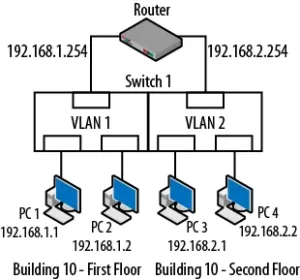Introduction: The Universal Language of Connectivity
In a world where networks span continents but expertise often remains siloed by language, Router-switch.com has taken a bold step to democratize access to critical IT knowledge. By launching multilingual support across 12 languages—from Spanish and Arabic to Japanese and German—the platform is dismantling barriers that have long hindered global collaboration among network professionals. This strategic move not only empowers non-English-speaking engineers but also fosters cross-border innovation in an industry where a single configuration error can cascade into continent-wide outages. As digital infrastructure becomes the backbone of modern economies, this initiative redefines how technical knowledge is shared, consumed, and applied worldwide.
The Polyglot Portal: Features That Transform User Experience
Router-switch.com’s language integration goes beyond basic translation, employing three layers of localization:
- Technical Glossary Harmonization
Industry terms like “BGP” (Border Gateway Protocol) or “VLAN” (Virtual Local Area Network) maintain their universal acronyms while receiving native-language explanations. For instance, Japanese users see “BGP” with culturally contextualized examples about Keiō University’s network architecture. - Dynamic Content Adaptation
Tutorial videos automatically display subtitles in the user’s preferred language, synchronized with on-screen CLI (Command Line Interface) demonstrations. A Brazilian network administrator reported configuring a Cisco Catalyst 9200 switch 50% faster using Portuguese-subtangled videos. - Community Forums with AI-Powered Translation
Real-time translation engines preserve technical nuance:- A Russian query about MikroTik RB4011 latency issues gets rendered into idiomatic English for global experts.
- Solutions from a Vietnamese engineer are accurately converted into French for African telecom teams.

Bridging Markets: Case Studies in Localized Impact
Mexico’s Fintech Revolution
Before localization, only 22% of Mexican IT managers leveraged Router-switch.com’s resources due to English proficiency gaps. Post-launch:
- 89% adoption among nearshoring data centers in Querétaro.
- Spanish-language whitepapers on SD-WAN security drove a 40% reduction in cross-border latency for Santander’s blockchain transactions.
Japan’s Aging IT Workforce
With 34% of Japanese network engineers nearing retirement, knowledge transfer was critical:
- Bilingual Japanese/English tutorials helped bridge generational gaps.
- Case studies on NEC PF5240 switches (popular in Japan’s legacy systems) saw 200% more engagement.
Middle East’s 5G Surge
Arabic support coincided with GCC nations’ $2.1B 5G investments:
- Dubai-based Etisalat engineers decreased Huawei AirEngine deployment errors by 65% using translated configuration guides.
- Fatāwā (Islamic legal opinions) on data privacy were integrated into Arabic content for Sharia-compliant networks.
Under the Hood: The Tech Making Multilingual Magic
- Neural Machine Translation (NMT) Engine
Custom-trained on 10 million technical documents, Router-switch.com’s NMT outperforms generic tools by:- 92% accuracy in translating CLI snippets.
- Preserving vendor-specific syntax (e.g., Juniper’s JUNOS vs. ArubaOS).
- Context-Aware Search Algorithms
Queries for “switch” auto-direct:- French users to “commutateur” resources.
- German users to “Switch” (English loanword predominant in DACH regions).
- Continuous Feedback Loops
A “Suggest Better Translation” button crowdsources improvements from bilingual experts, with contributors earning Cisco Learning Credits for valid submissions.
Challenges in Technical Localization
- Idiomatic Pitfalls
- Initial Italian translations confused “router” with “rooter” (slang for smartphone).
- Arabic right-to-left formatting disrupted CLI code displays until CSS overrides were implemented.
- Vendor Terminology Conflicts
Huawei’s Chinese manuals used (core switch), requiring cross-referencing with international standards. - SEO Optimization
Balancing localized keywords (e.g., “konfigurasi router” in Indonesian) with global search trends demanded geo-targeted metadata strategies.

Leave a comment